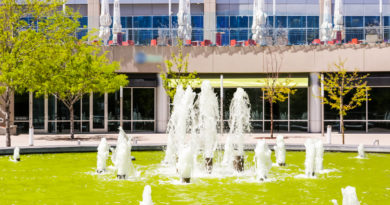New Tech Threats Going Into the Post-Pandemic Recovery
There are significant ongoing technological advances globally, across many fields. These include artificial intelligence in robotics and machine learning, biotechnology; nanotechnology; quantum computing; and space technology. With the outbreak of the COVID-19, there have been many breakthroughs with technology to try and cope with the disease. However, these breakthroughs are expected to create a sweeping societal change.
In 2020, there were very few predictions regarding cybersecurity and how more people working from home would spark an explosion of security issues. There was little to no knowledge on how the cyber pandemic would include data breaches, ransomware, and healthcare attacks that would impact patients. Many cybersecurity companies reported major post-pandemic recovery threat predictions, moving into 2021, where there was an expected return-to-normalcy state.
What are the Expected Tech Threats After the Pandemic?
With many cybercriminals capitalizing on newly adopted technologies and imperfect M&A, here are some significant technological threats going into a post-pandemic recovery.
Ransomware Attacks
Over the past few years, ransomware attacks have become more rampant and target high-profile companies. They’re likely to be more sophisticated and technologically advanced in a post-pandemic period due to the increased global connectivity. Cybercriminals will keep employing APT and hacker techniques to probe and explore target organization networks to locate vulnerable and valuable systems. They will hijack admin accounts and simultaneously launch blitz attacks using administrator tools.
Random Infections
In the past years, cybercriminals have spent their time profiling randomly infected computers that have periodic access or are connected to industrial networks. The malware infections will be less random in a post-pandemic period as access to these computers will already be sold to more sophisticated groups to monetize attacks.
APT
In the next few years after the pandemic, Advanced Persistent Threat groups will have pursued their victims and adapted to their cyber defenses, making them highly successful.
Cyber Espionage
OT networks, being more accessible to break into than office networks, cybercriminals will take advantage and launch attacks. Such attacks involve the theft of sensitive or intellectual data to gain a competitive advantage over a government entity or company.
COVID-19 Government Consequences
With many countries facing an economic decline due to slow growth in businesses, the fall of others, and lockdowns, cybercriminal ranks are sure to increase as more professionals seek alternative employment. With the increased online presence of municipal utilities and services and the digitization of public and government services, there’s more vulnerability to cybersecurity attacks. Additionally, there will be increased opportunities for cross-agency assaults and attacks on government functions and support systems.
How You Can Protect Yourself from Post-Pandemic Recovery Tech Threats?
When it comes to cybersecurity, just like health, prevention is better than cure. As businesses try to get back on their feet, more cybercriminals take advantage of the same digital technology that you’re using to propel yourself towards success against you. Having seen what cybercriminals can do to large organizations, like launching attacks targeted on WHO (World Health Organization), it is best to be on the safe side.
Protect your organization against new tech threats by ensuring your staff is aware and always looking out for malicious phishing emails, websites, and links. Additionally, employ managed ICT support from an IT Company in Oklahoma City to update systems and software, and guard your organization against ransomware, APT, or cyber espionage.



